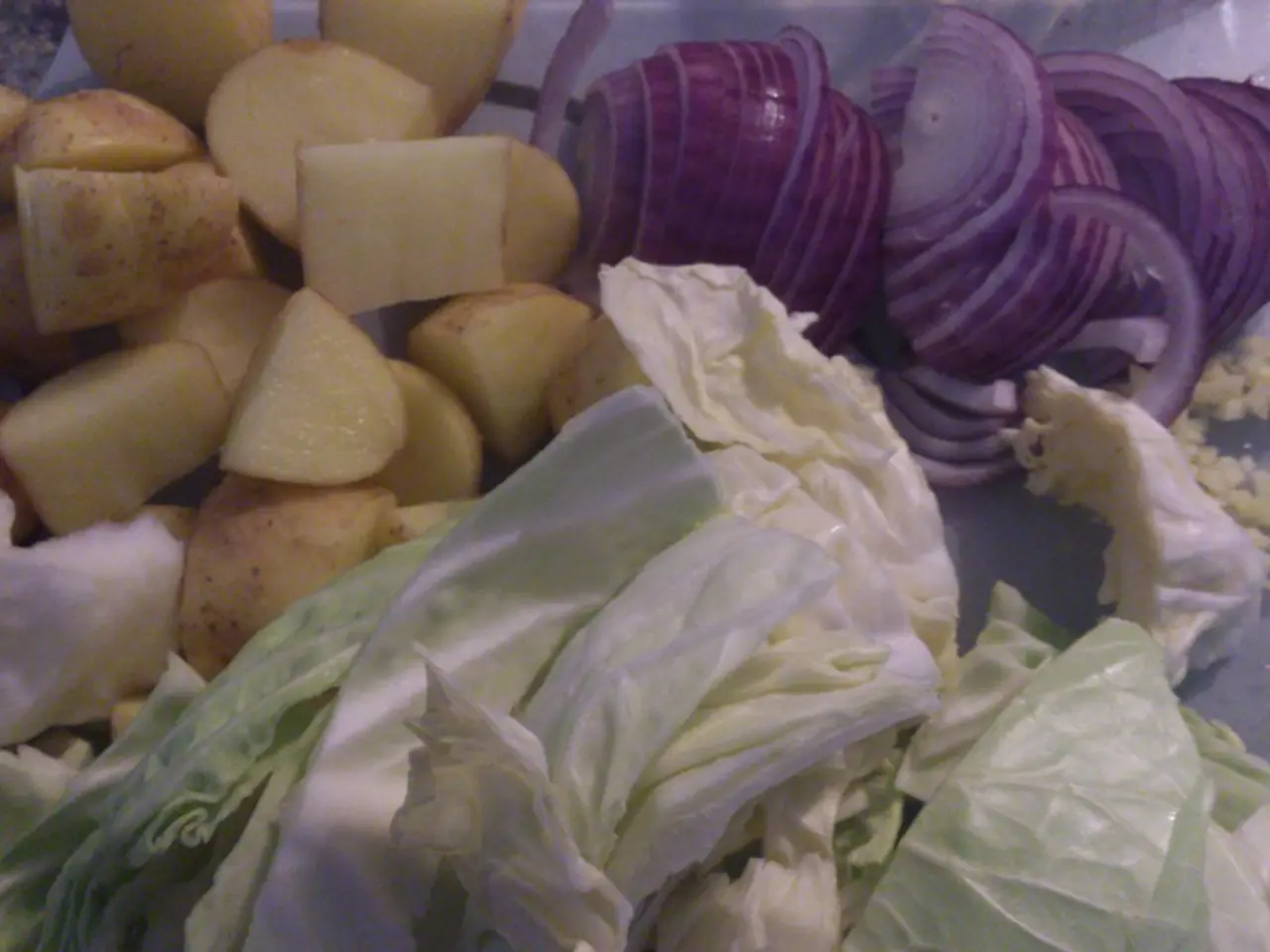DIY Sauerkraut Preparation Guide
Making Homemade Sauerkraut: A Step-by-Step Guide
Sauerkraut, the tangy and flavourful fermented cabbage, is a simple and rewarding project for home cooks. Here's a comprehensive guide on making your own sauerkraut, complete with variations and storage tips.
Preparing the Sauerkraut
To begin, slice a fresh head of cabbage thinly. Aim for thin strips for a softer texture, or keep them thicker for a crunchier kraut. You can use a mandoline for fine cuts. Next, mix the cabbage with coarse salt, about 2 tablespoons per head or 20g per kg. Massage or pound the cabbage and salt vigorously for 5–15 minutes until the cabbage releases its juices.
Packing and Fermenting
Pack this salted cabbage tightly into a sterilized jar, ensuring no air pockets and that the cabbage is fully submerged in its own brine. Weigh down the cabbage with reserved whole leaves or a weight, cover the jar loosely, and ferment in a dark place for 7 to 14 days depending on room temperature. Watch for bubbling, as this indicates active fermentation.
Variations and Tips
For added flavour complexity, consider adding ingredients such as thinly sliced garlic cloves or apple pieces. Some recipes blend chopped cabbage core and apple with water to add beneficial bacteria slurry back into the mix. The thickness of the cabbage cut affects texture: thicker slices retain crunch, while finer cut cabbage ferments faster and softer.
Storing Your Sauerkraut
Keep sauerkraut submerged in brine to avoid mold. Use sterilized jars and weights to maintain anaerobic conditions. Store fermented sauerkraut in the refrigerator after initial fermentation to maintain flavour and prolong shelf life, potentially up to 8 months if kept sealed and cool. Alternatively, fermented sauerkraut can be canned by pressure canning at 10-20 lbs pressure for 15-20 minutes to extend shelf life without refrigeration, but this kills probiotics.
Equipment and Quantities
The recipe for homemade sauerkraut requires 2 pounds of cabbage, 4 teaspoons of fine sea salt, a jar, glass weights, and an airlock. Stoneware crocks, heirloom-quality pieces, come with heavy weights and have a well that you fill with water, which keeps oxygen out, making them excellent for large batch fermentation of 1 gallon or more.
Safety Considerations
The right equipment can help keep sauerkraut safely fermenting and minimize the risk of contamination by mold and other microbes. Always monitor brine levels and cleanliness to prevent spoilage.
This traditional fermentation produces raw sauerkraut rich in probiotics, vitamins, and minerals best preserved by avoiding cooking after fermentation. Enjoy your homemade sauerkraut as a tangy and nutritious addition to your meals!
- By incorporating ingredients like thinly sliced garlic cloves or apple pieces in your meal plans, you can enhance the flavor complexity of your homemade sauerkraut, which is a healthy-cooking staple for food-and-drink enthusiasts.
- The process of fermentation, as shown in making homemade sauerkraut, is a fascinating application of science in the realm of health-and-wellness and lifestyle, as it aids in the production of probiotics which support fitness-and-exercise.
- Upon completing your sauerkraut-making project, store your fermented kraut in a sterilized jar, ensuring the anaerobic conditions necessary for its preservation, thus extending its shelf life from a few weeks to up to 8 months when kept cool.
- In the realm of food-and-drink and cooking, the art of sauerkraut-making offers a simple and rewarding exploration into the world of traditional fermentation, all within the comfort of your own kitchen.




